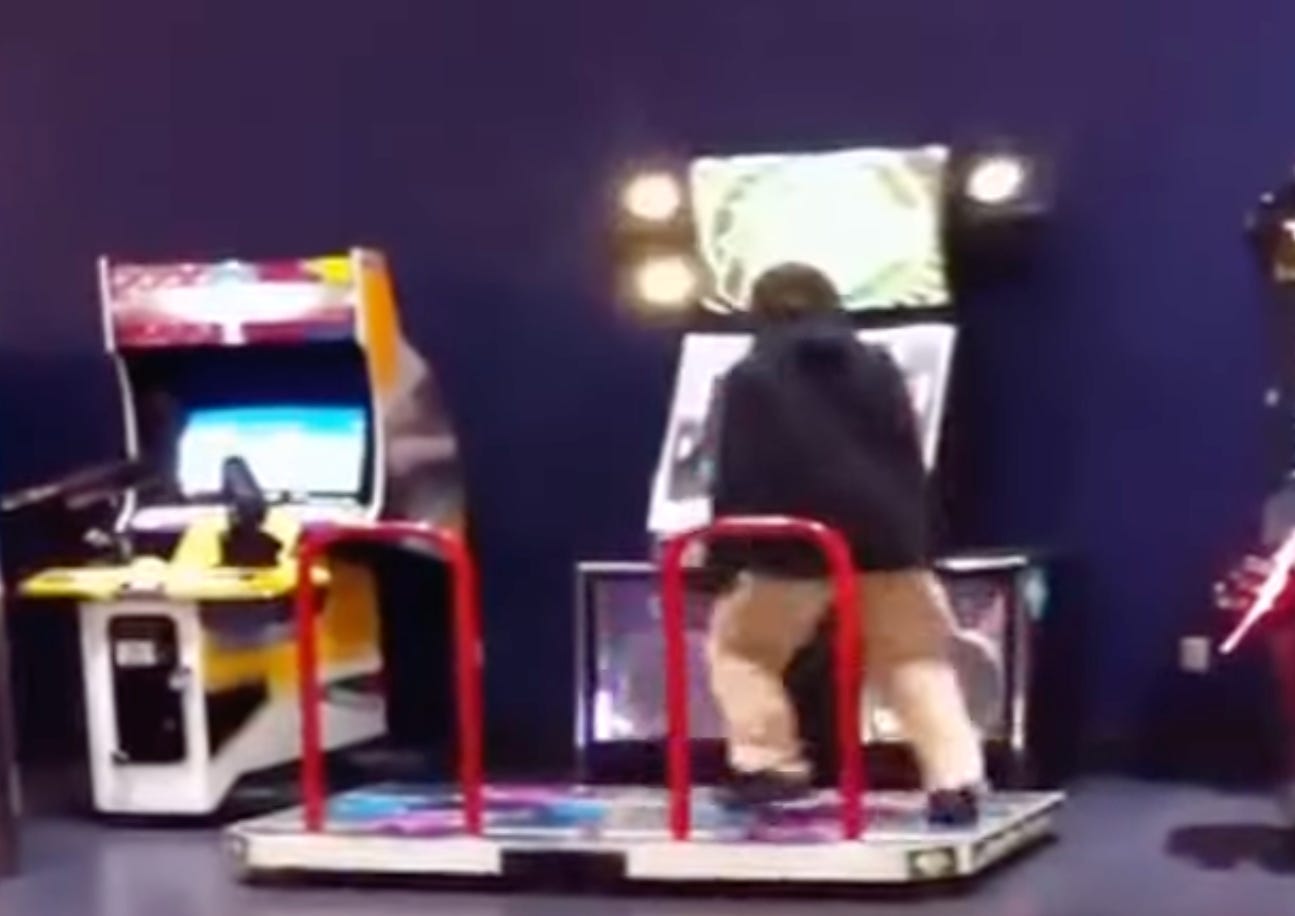
Difference is a dance: it takes two to tango, as it were. Ushering in the new millennium in 1998, the tango was replaced by the Dance Dance Revolution machine. What had once been an activity of embodied differentiation — an erotic encounter on the ballroom floor — had been reduced to individual operations of the same: two “dancers,” rendered users, look ahead towards a single screen providing an identical instruction of Up, Down, Left, and Right. When the song concludes, each will receive a letter grade and only one will be declared “winner.” Some versions of the game will even estimate how many calories were sacrificed in the process. For players wishing to eliminate their partner altogether, they may opt to play “double,” in which they occupy the entire territory of the playspace as their own, weaving between two sets of arrows.
In 2016, the dance was once again transformed. Each day, 34 million videos are uploaded to TikTok, ranging from 15 seconds to ten minutes. The application thrives on mimesis, encouraging users to appropriate one another’s sounds and visuals, incorporating them as a “template” for their own material. Of the countless forms of content copied on the platform, the dance is one that reigns supreme. To some degree, the human counterpart of the dance has returned, but only in appearances. Though the scrolling arrows of the arcade machine have been substituted with a person, the body of another is nevertheless a mere object of instruction. Users look at the figure not as a partner, but as yet another code; a template to copy (or even replace, if one’s own upload becomes more popular than the previous iteration). In spite of incomprehensible connectivity, the dance remains an individualize experience.
With the shrinking of the screen, the dance now fits in one's pocket. No longer taking place in the shopping mall arcade, the programmed dance today emerges on the bus, the gas station parking lot, the bedroom, and the funeral; sites of potential encounter now rendered virtual spaces in which the mirror-image of the front-facing camera shrinks the field of view. If there is a revolution, we are not its leaders but rather its casualties. Konami was a false comrade, and their revolt was the desecration of the dance and elimination of the other. Perhaps Chris Danford saw the writing on the wall when he developed an open-source clone of Konami’s game, fittingly named Stepmania.




I think TikTok dance promotes differentiation in some ways. Making a mistake while trying to copy someone else’s dance is often the impetus for making a video. I also think part of the intrigue of dance videos on TikTok is that it’s different people doing the same dance. So as much as it’s about copying an initial form, the specific person is always still there, being different. Maybe this works in service of the ‘copying.’ Maybe not. I’ve also seen dances evolve over time, and the source of new dances is sometimes random people from all over the world (though it’s also often a corporate advertising campaign). So I think in some ways it’s a conversation between the original uploader (who, in the third case, is sometimes impossible to find?) and the re-dancers. But it’s also kind of individualized because they aren’t together in real space, aren’t touching like tango (though requiring physical touch is perhaps not a solid ground for interaction, many people don’t like to be touched and didn’t even before the first telephone).
Also, while dancing anywhere at any time means communing with digital space and is kind of always ‘facing the net’ so to speak, it does also democratize dance away from the dance halls and the ballet spaces. It would be interesting to compile the ways that TikTok dancers feel about this, and to know how much they are thinking about the screen and the computer versus the gas station, bus, or parking lot. Maybe some people do TikTok dances primarily with their friends and it’s still a real-life thing. Though I assume it’s more common that they are just addicted to their phones.
-David